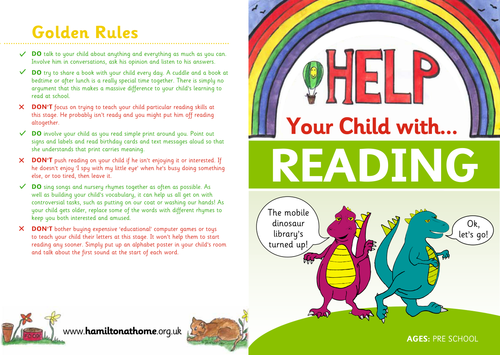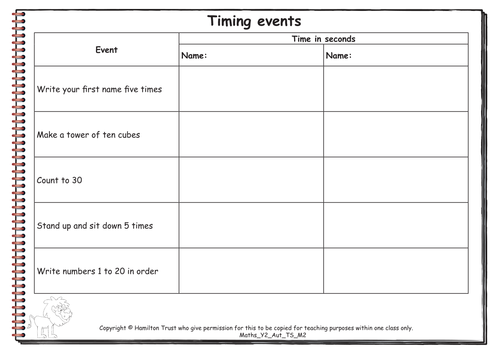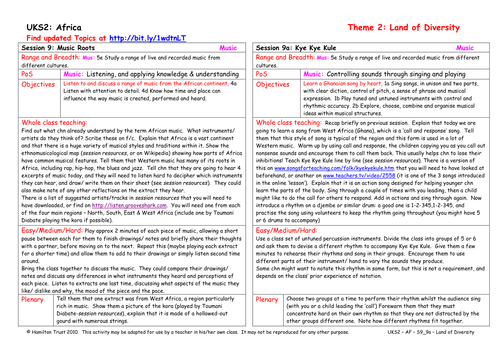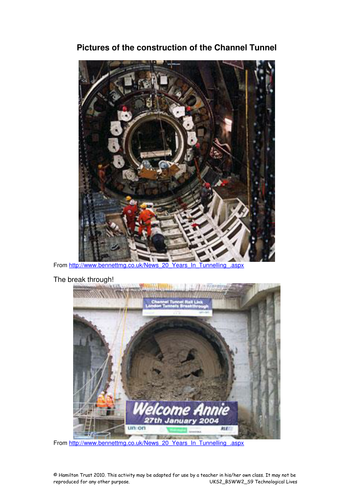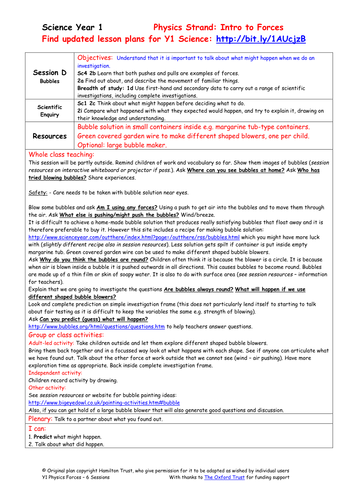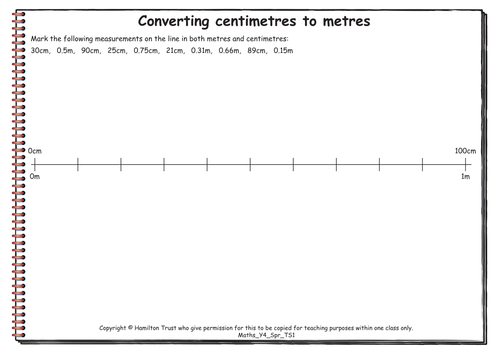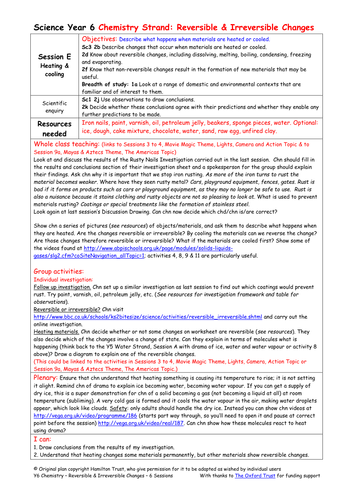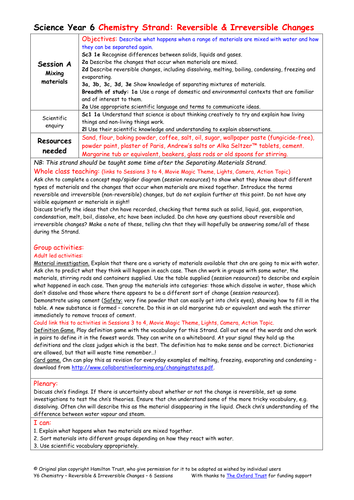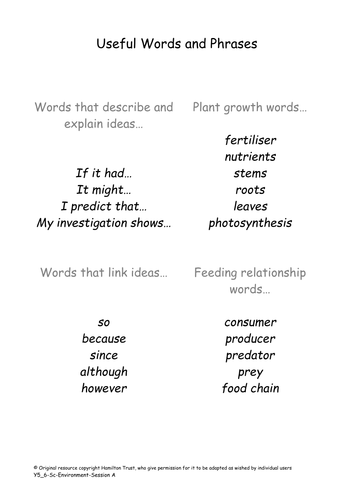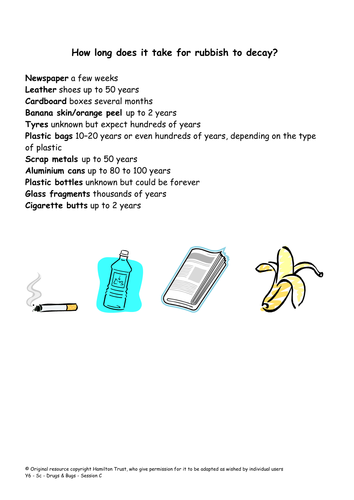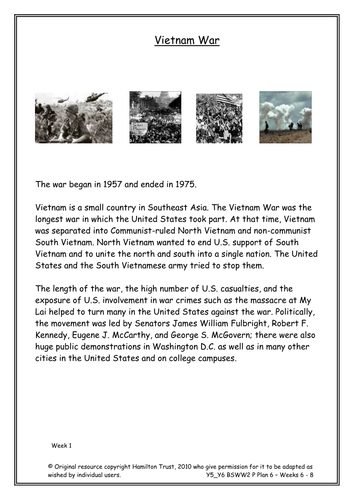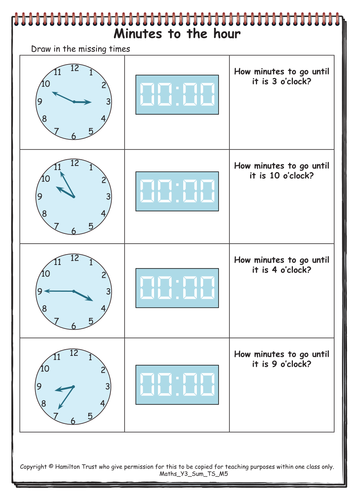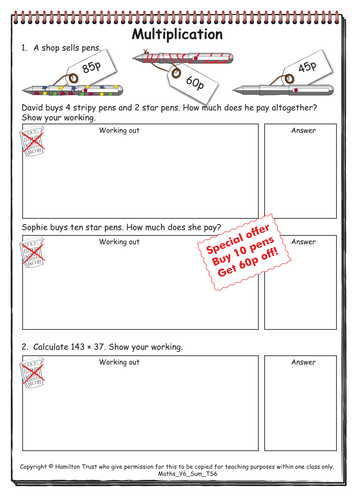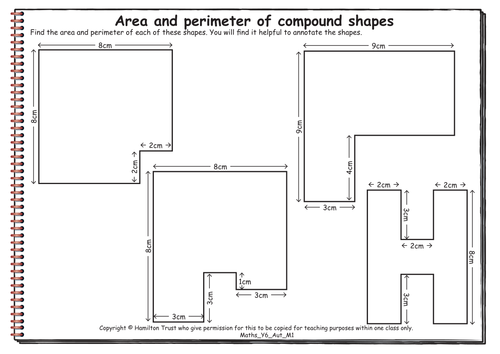
3k+Uploads
10009k+Views
11617k+Downloads
All resources

Maths Y2 Autumn Teaching Sequence M2
Tell the time to the quarter of the hour and use units of time (four days).
Children learn about the relationships between seconds, minutes, hours, days, weeks and years. They use stopwatches and sand timers to time events and also how many actions they can repeat in one minute, to gain a sense of a minute. Children make sand and water clocks. The quarter of an hour is introduced and children order clocks including those showing ‘quarter past’. Children learn how ‘half past’ and ‘o’clock’ times are displayed on digital clocks.
Find additional lesson plans and resources at www.hamilton-trust.org.uk.

Music Roots
Children find out about the diversity of music in Africa. African music has been influenced by the music of other cultures, but it has also influenced other music itself. Children listen to some African music, comment and try to identify instruments used.
Suitable for years 5 and 6.
Find other lesson plans and resources at www.hamilton-trust.org.uk.

Crossing The Channel
Children discuss ways of crossing the Channel and then make a balloon-powered hovercraft.

Bubbles
Explore bubbles, the forces needed to make bubbles and the force that make bubbles round. Investigate the question: Are bubbles always round? What will happen if we use different shaped bubble blowers? Suitable for Year 1 pupils.
Find other lesson plans and resources at www.hamilton-trust.org.uk.

Mental Oral Starters - Year 1
Mental and oral starters for Year 1 Spring Teaching Sequence 4.
Count on in 10s from a single digit number. Count one more/less than any two digit number. Relate a 1-100 number line to a 1-100 number square. Count in tens to 100 in the context of money. Count on in tens from single digits.
Find additional lesson plans and resources at www.hamilton-trust.org.uk.

Maths Y4 Spring Teaching Sequence 1
Decimal notation for tenths and hundredths (three days).
Children learn to write distances of less than 100cm as metres, discussing the value of each digit. They move onto convert distances of more than 100cm from centimetres to metres, ordering measurements and using a number line to help. Results (times to the nearest hundredth of a second) of Olympic events are then compared and athletes’ positions worked out.
Find additional lesson plans and resources at www.hamilton-trust.org.uk.

Maths Y2 Summer Teaching Sequence 5
Add/subtract two-digit numbers by adding multiples of ten then adding the units using known addition facts (four days).
Children revise adding and subtracting 21, 22, and 23 to/from two-digit numbers using Jump (J10, adding/subtracting a two-digit number by counting on/back in tens first). They then use this strategy to add and subtract two-digit numbers on landmarked lines, then empty number lines. They are encouraged to add/subtract the units digit using knowledge of addition/subtraction facts and not counting in ones.
Find additional lesson plans and resources at www.hamilton-trust.org.uk.

Lunch boxes and favourite juices
Children select ingredients for a healthy and an unhealthy lunchbox. Introduce the concept of 5 portions of fruit or veg per day.
Conduct a survey about favourite fruit juices and draw pictograms and block graphs. Draw and label healthy lunchboxes.
Suitable for Year 2 pupils.
Find other lesson plans and resources at www.hamilton-trust.org.uk.

Heating and cooling
Use findings from Rusty Nails Investigation to plan another test. Look at the changes that occur when common materials are heated, and then decide whether or not cooling will reverse the change. What happens if the materials are first cooled and then heated?
Suitable for Y6 pupils.

Mixing materials
Find out what children already know about materials and the changes that occur when they are mixed. Predict and investigate what happens when a variety of materials are mixed with water. (Re)introduce terms reversible and irreversible. Play a vocabulary game.
Suitable for Y6 pupils.

Mental Oral Starters - Year 1
Mental and oral starters for Year 1 Autumn Teaching Sequence 12.
To begin to know doubles of numbers up to five. To practise adding two small numbers.
Find additional lesson plans and resources at www.hamilton-trust.org.uk.

Plant growth
Children receive a letter requesting help from the Native Nursery. Children must design and set up experiments to find the best conditions for growing seeds. They will monitor progress and report their findings in Session F.
Suitable for Y5/6 pupils.

Food and micro-organisms
Look at micro-organisms that are beneficial to food production and the problems of food decay caused by micro-organisms. Study yeast growth and begin some decay investigations on damp bread and apples. Use yeast to make bread rolls and discuss food hygiene.
Suitable for Y6 pupils.

Song lyrics Weeks 6 - 8
This unit is all about having fun with iconic song lyrics!
Children will explore underlying themes and influences in key songs by the Beetles and Bob Dylan before composing their own song lyrics about current issues that are important to them.

Maths Y2 Autumn Teaching Sequence 3
Number facts to 20, equality [3 days].
Children revise partitioning pairs up to and including ten, then 20, recording the corresponding addition and subtraction sentences. They use images such as the 20 bead frame and ‘slidy’ box’ cards to reinforce the idea of an empty box in number sentences. They use the idea of equality and the image of the number balance to help them to write number sentences such as 7 + 3 = 6 + 4.

Maths Y3 Summer Teaching Sequence M5
Telling the time and calculating intervals (three days).
Children revise the equivalent digital and analogue ways of recording times between the half hour and next hour (minutes to). Intervals are found between times, including bridging the hour (e.g. calculating the time difference between 2:50 and 3:15) using analogue clocks to help. Children work together to use a time line to find pairs of times 25 minutes apart.
Find additional lesson plans and resources at www.hamilton-trust.org.uk.

Maths Y6 Summer Teaching Sequence 6
Revision of multiplication and division, and solving word problems (four days).
Children solve straightforward multiplications and divisions involving numbers with up to three digits and one decimal place, including those set in word problems. They use mental, written and calculator methods. Addition and subtraction are used to solve word problems. Children use their knowledge of addition and subtraction to find mystery numbers. They solve word problems involving several steps including combinations of addition, subtraction, multiplication and division.
Find additional lesson plans and resources at www.hamilton-trust.org.uk.

Maths Y6 Autumn Teaching Sequence M1
Measures: area and perimeter (four days).
Children use a formula to find the area of rectangles, and then divide up compound shapes into rectangles to find their area. They learn how to find the area of right-angled triangles, and use this to find areas of compound shapes that can be divided into rectangles and triangles. They also find the perimeters of rectangles and compound shapes. Drawing round objects on squared paper, counting squares and taking account of partial squares is used to find the area of handprints and leaves.
Find additional lesson plans and resources at www.hamilton-trust.org.uk.

Maths Y5 Spring Teaching Sequence 2
Place value of decimals (three days).
Children place numbers with one decimal place on a number line, then do the same for numbers with two decimal places. They use this experience to order a mixed set of numbers with one or two decimal places. Numbers with one or two decimal places are rounded to the nearest whole number, and the reasons for doing so discussed.
Find additional lesson plans and resources at www.hamilton-trust.org.uk.

